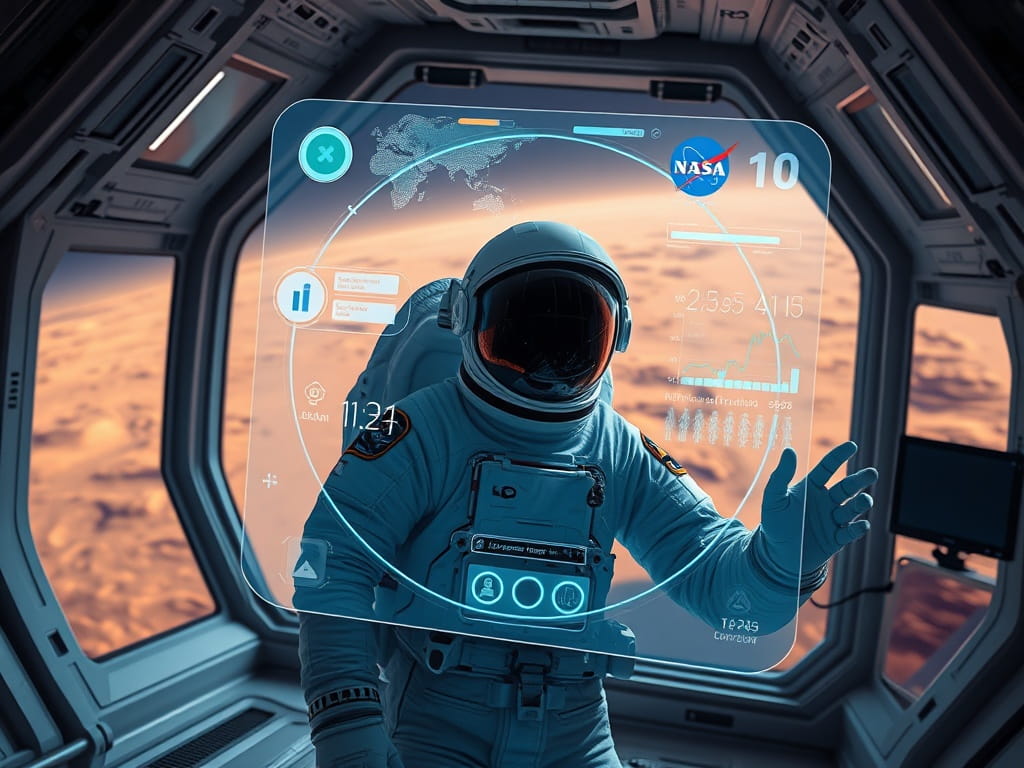BitcoinWorld  AI Medical Assistant: NASA and Google’s Revolutionary Leap for Astronaut Care
AI Medical Assistant: NASA and Google’s Revolutionary Leap for Astronaut Care
In a world where digital innovation rapidly reshapes our daily lives, the convergence of artificial intelligence and space exploration is poised to revolutionize humanity’s reach beyond Earth. For those keenly following the cutting-edge of technology, much like the advancements in blockchain and cryptocurrencies, the latest collaboration between NASA and Google represents a monumental stride. They are jointly developing an AI medical assistant, a groundbreaking tool designed to ensure the well-being of astronauts on unprecedented long-duration voyages, especially to Mars. This initiative not only pushes the boundaries of medical support but also highlights the critical role of advanced AI in enabling future space missions.
Why is Earth-Independent Space Health Crucial?
For decades, astronauts on the International Space Station have benefited from relatively close proximity to Earth, allowing for real-time communication with medical experts in Houston, regular resupply of medicines, and the option of a swift return home if severe health issues arise. However, as NASA, in partnership with private ventures like Elon Musk’s SpaceX, sets its sights on journeys to the Moon and Mars, these luxuries will no longer be available. The sheer distance and duration of these future space missions necessitate a paradigm shift in space health protocols. Astronauts will need to be self-sufficient, capable of handling complex medical situations without immediate external support. This looming reality is the driving force behind NASA’s push for ‘Earth-independent’ medical solutions.
Unveiling the AI Medical Assistant: CMO-DA
At the heart of this transformative effort is the Crew Medical Officer Digital Assistant (CMO-DA), an experimental AI medical assistant born from the collaborative genius of NASA Google AI. This proof-of-concept tool is specifically engineered to empower astronauts to diagnose and treat symptoms effectively, even when direct communication with Earth is compromised or impossible. Running within Google Cloud’s Vertex AI environment, CMO-DA is a multimodal system, processing information through speech, text, and images. David Cruley, a customer engineer at Google’s Public Sector business unit, explained that the project operates under a fixed-price Google Public Sector subscription, covering cloud services, application development infrastructure, and model training. Significantly, NASA retains ownership of the source code and has played a pivotal role in fine-tuning the underlying AI models, leveraging the Vertex AI platform’s access to both Google and third-party models.
Rigorous Testing and Promising Astronaut Care Outcomes
The effectiveness of CMO-DA, the pioneering AI medical assistant, has been rigorously tested through simulated medical scenarios. NASA and Google subjected the tool to three distinct challenges: an ankle injury, flank pain, and ear pain. A panel of three physicians, including an experienced astronaut, meticulously evaluated the assistant’s performance across critical aspects: initial evaluation, history-taking, clinical reasoning, and treatment planning. The results were highly encouraging, showcasing a remarkable degree of diagnostic accuracy. The assessment found the flank pain evaluation and treatment plan to be 74% likely correct, ear pain at 80%, and an impressive 88% accuracy for the ankle injury. These promising figures underscore the potential of CMO-DA to significantly enhance astronaut care in remote space environments.
The Evolutionary Path for Space Health and Beyond
The development roadmap for this advanced AI medical assistant is intentionally incremental, reflecting a cautious yet ambitious approach. NASA scientists have outlined plans to integrate additional data sources, such as direct inputs from medical devices, to further enrich the AI’s diagnostic capabilities. A key future objective is to train the model to be ‘situationally aware,’ meaning it will be attuned to the unique physiological and environmental conditions of space medicine, including the profound effects of microgravity. While Google’s Cruley remained circumspect about the company’s immediate plans for regulatory clearance to deploy this type of medical assistant in terrestrial doctor’s offices, the potential for such a transition is evident. The lessons learned from developing this tool for space health could undoubtedly have broad applicability to other areas of healthcare, extending its impact far beyond future space missions and offering innovative solutions for medical challenges on Earth.
The collaboration between NASA and Google on the Crew Medical Officer Digital Assistant marks a pivotal moment in human spaceflight and medical technology. This AI medical assistant is not merely a tool; it’s a testament to human ingenuity, preparing us for the next giant leaps in space exploration. By empowering astronauts with autonomous medical capabilities, we are not only safeguarding their health on long-duration missions but also laying the groundwork for revolutionary advancements in healthcare that could benefit everyone on Earth. As we look towards a future where humanity ventures deeper into the cosmos, the synergy of AI and space medicine promises a healthier, safer journey for all.
To learn more about the latest AI trends, explore our article on key developments shaping AI models for future applications.
This post AI Medical Assistant: NASA and Google’s Revolutionary Leap for Astronaut Care first appeared on BitcoinWorld and is written by Editorial Team

